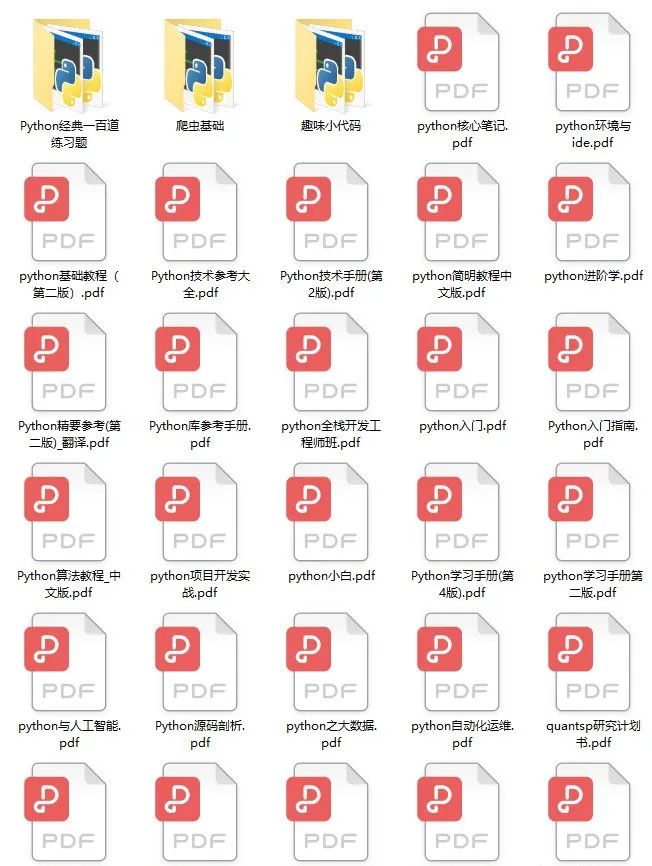Follow 👆 the official account and reply with "python" to receive the zero-based tutorial! Source from the internet, please delete if infringed.For many, the term “artificial intelligence” is both exciting and enigmatic. After all, almost all tech giants—from Google, Facebook, Apple, and Amazon abroad to BAT, Huawei, Meituan, and Toutiao in China—are rushing into this field. AI technology has permeated every aspect of life, from voice assistants on smartphones, articles pushed in news apps, to product recommendations while shopping on Taobao, all utilizing AI technology.
Python—The Best Language for AI
Python dominates in data science and AI for the following reasons:
1. Low entry barrier and quick to learn;
2. More versatile and practical than R;
3. More productive and flexible than Java and C;
4. Better ecosystem than Ruby and Java;
5. Python’s development ecosystem is mature, with many very useful libraries available.
Good Money
With the continuous rise of AI and machine learning, practitioners’ salaries have also soared, with monthly salaries reaching up to 25K for those with 1-3 years of experience, and mainstream annual salaries between 400,000 to 800,000. Even so, there is still a shortage of talent in the domestic market. Furthermore, as AI is applied to various aspects of life in the future, those who master the relevant technologies and enter related industries will have several times the competitive edge over others. And the starting point for all this is Python machine learning.
This tutorial takes 15 days to complete.
Days 1-3: Linux basic commands; Days 4-13: Python basics; Days 14-15: Airplane battle project practice.
Phase 1 (Days 1-3):
This phase starts with an introduction to three operating systems from different fields, a brief history of the development of operating systems, and the file directory structure of Linux, giving everyone a simple understanding of the Linux system and why we should learn Linux commands. Then we will officially learn Linux commands.
1. File and directory commands: ls, cd, touch, mkdir, rm
2. Copy and move commands: tree, cp, mv
3. File content commands: cat, more, grep
4. Remote management commands: ifconfig, ping, a brief introduction to how SSH works and the ssh command
5. User permissions and user management commands: chmod, chgrp, useradd, passwd, userdel
6. Software installation and compression commands: introduction to apt and commands, tar, gzip compression commands, bzip2 compression commands
7. Basic usage of vim
Phase 2 (Days 4-10)
In this phase, we will formally enter the study of the Python language, starting with an understanding of the origin of Python, the design goals of the Python language, its design philosophy, the advantages and disadvantages of Python, and the basic concepts of object-oriented programming, as well as how Python executes and the use of the integrated development environment PyCharm to lay the groundwork for our subsequent studies.
Then we will learn about three simple variable types: int, string, float; calculations between variables; input and output of variables; if statements; while loops; for loops; the use of break and continue; basic function usage; module usage; and three advanced variable types: lists, tuples, and dictionaries, along with common string operations.
Phase 3 (Days 11-13)
In this phase, we will learn about the important programming paradigm of object-oriented programming (OOP). The knowledge points to be covered include the basic concepts of classes and objects, the dir function, the role of self, the initialization method __init__, built-in functions __str__, __del__, single inheritance, method overriding, private attributes and methods, multiple inheritance, polymorphism, class attributes, and static methods.
We will also learn about the singleton design pattern, exception handling, local imports using from import, importing tools with the same name, importing all tools using from import, using packages, creating modules, using pip, and file-related operations.
Phase 4 (Days 14-15)
This phase is the project practice phase, where we will guide everyone through developing the classic game ‘Airplane Battle’ using the knowledge previously learned. The project includes modules for game windows, image rendering, game loops, event listening, sprites and sprite groups, creating enemy planes, creating heroes, launching bullets, and collision detection.

How to Get:
-
Like + View Again
-
Reply with “python” in the official account
Get the latest 2024 zero-based Python learning materials by replying:Python in the backend